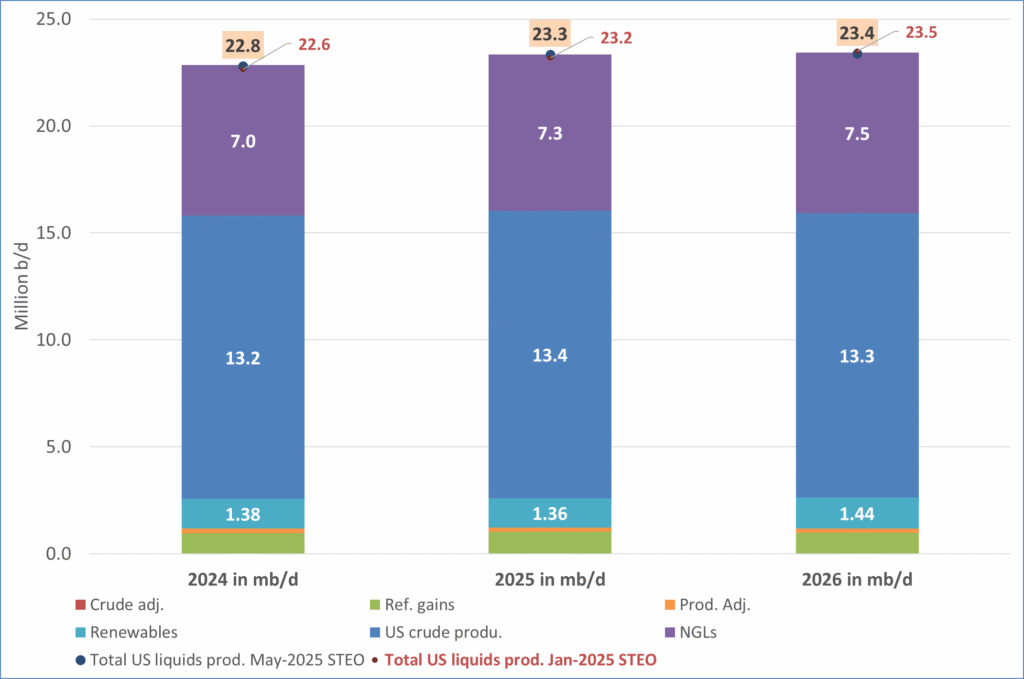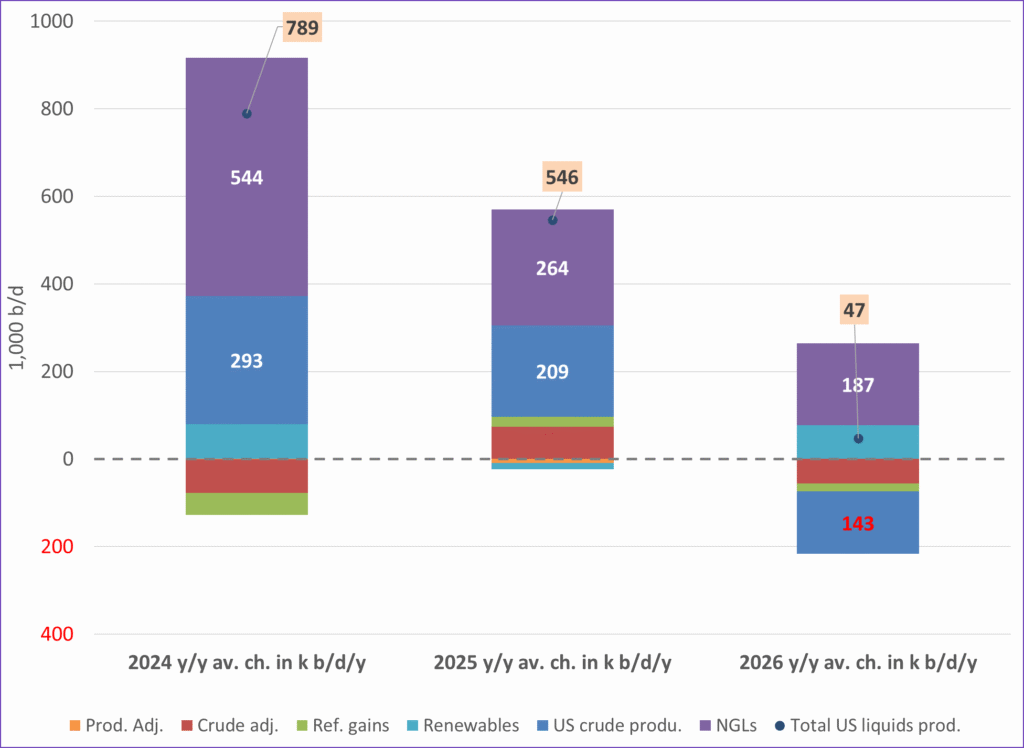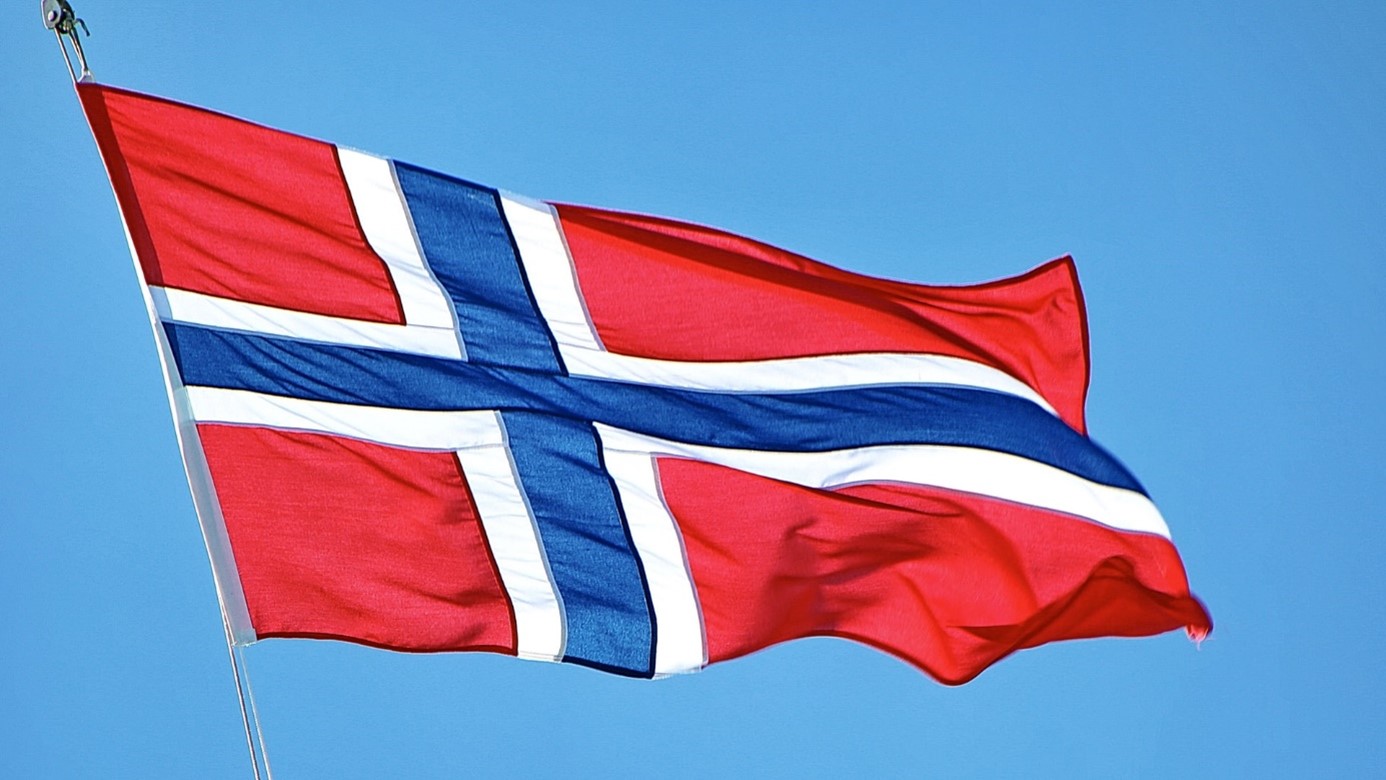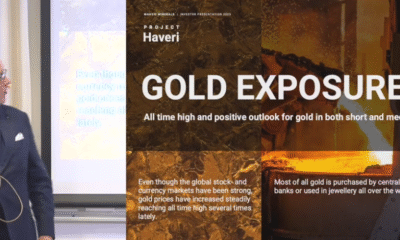Analys
SHB Råvarubrevet 27 juli 2012
 Olja
Olja
Brentoljan har gått upp i pris varje dag under veckan. I skrivande stund ligger priset på 105.90 USD/fat vilket motsvarar en uppgång på 2.5%. Detta är den tredje veckan i rad med uppgångar. En del av uppgången kan förklaras av det förbättrade risksentimentet vilket i sin tur har försvagat dollarn. Risksentimentet fick ytterligare stöd under fredagen då ECB:s Mario Draghi indikerade att centralbanken kan tänka sig att stödköpa obligationer utgivna av krisdrabbade länder. ECB har använt sig av stödköp tidigare men avslutade köpprogrammet i mars.
Koppar
Kopparpriset har stigit med knappt 2 % under veckan, framförallt drivet av positivare framtidsutsikter. Priset på koppar har stigit något mer än de andra basmetallerna (exempelvis aluminium). En anledning kan vara den något anstränga utbudssituationen. Den volym som finns lagrad för omedelbar användning befinner sig 20 % under genomsnittet för de 10 senaste åren. Något som talar emot en kraftig prisuppgång för koppar är att Kinas valuta yuanen försvagats mot US-dollarn. (Kina är världens största kopparkonsument). Yuanen handlas nu till 6.38, vilken är en försvagning från 20-års lägsta på 6.28 (som nåddes under maj). Å andra sidan kommer de kinesiska exportföretagen nu få kostnadsfördelar gentemot sina utländska konkurrenter.
Guld
Paradoxalt nog har även guldet gynnats av den förbättrade riskaptiten. Under veckan har priset gått upp 2.7% för att just nu handlas på 1627 USD/ounce. Prisutvecklingen på guld börjar mer och mer likna utvecklingen för metaller såsom koppar och aluminium. För tillfället verkar guldet ha tappat sina ”positiva portföljegenskaper”, det vill säga ha en negativ korrelation med marknaden. I det längre perspektivet kan det vara intressant att se vad som händer i de stora guldköpande länderna (Indien och Kina). De senaste siffrorna från Indien visar på en nedgång med upp till 35 % jämfört med månaden innan. De indiska köparna (främst landsbygdsbefolkning och urban medelklass) pressas av en svag börs samt som den indiska rupien har tappat mycket mot US-dollarn. Om trenden håller i sig så skulle detta vara andra året i följd som importen till Indien minskar.
Socker
Det regn i Brasilien som sedan några veckor tillbaka har försenat sockerskörden avsevärt har avtagit. Torrt väder är gynnsamt för skörden och det stora antal fartyg som väntat på last i de brasilianska hamnarna minskar till antal. Marknaden håller även ögonen på monsunperioden i Indien vilken står för ca 70% av landets årliga nederbörd. Monsunperioden har hittills medfört betydligt mindre regn än estimerat vilket kan komma att påverka den kommande skörden negativt. Torkan i USA som medfört stora skador på majs skördarna har lett till spekulationer om ett eventuellt ökat intresse för socker som substitut till majs sirap.
Kaffe
Stora mängder regn i Brasilien i juni har fördröjt skörden av kaffe samt även delvis försämrat bönornas kvalitet. Regnet har avtagit och enligt prognosen ska det torrare vädret hålla i sig till början av augusti vilket är positivt för kaffeproducenterna. Spekulationer kring en minskad efterfrågan av kaffe till följd av de ekonomiska oroligheterna i Europa fortsätter påverka priset och producenterna verkar invänta ett något mer gynnsamt prisläge.
Apelsinjuice
Den rådande orkansäsongen i Florida har hittills inte orsakat någon skada på skörden och kvaliteten samt utbudet av apelsiner är god. Orkansäsongen har fått en mild start men något ökad risk för tilltagande storm över Atlanten i början av veckan fick priset att klättra marginellt.
Vete
Terminspriser på vete har i veckan gått ned i både Chicago och Paris påverkat bland annat av lägre priser på majs i USA och förbättrat väder i stora delar av Europa. Oron ökar dock i Ryssland, där avkastningsnivån hittills ligger långt under det normala för vetet, tidigare i veckan rapporterade det ryska jordbruksministeriet att skörden var till 22 procent avklarad och att avkastningsnivån ligger nästan 30 procent under förra årets nivå – vilket skulle innebära en total produktionsnivå på under 40 miljoner ton, att jämföra med drygt 56 miljoner ton förra året. Exporttakten vad gäller ryskt vete har varit ganska hög den senaste tiden och fler och fler börjar nu tro att någon form av exportbegränsningar kommer införas någon gång på säsongen, även om regeringen fortsätter hävda att det inte är aktuellt.
Marknaden är nu ganska nervös och väldigt mycket negativt är redan inräknat i dagens höga prisnivå, det kanske blir svårt för priserna att gå så mycket högre nu men skicket på den amerikanska majsen (som till stor del drivit prisuppgången) kan mycket väl förvärras ytterligare och situationen i Ryssland är som sagt klart osäker. Någon större nedgång är svår att se inom en snar framtid, på lite längre sikt är risken dock som vanligt stor och fallhöjden är såklart väldigt stor från dagens nivåer.
Majs
Majsen i Chicago har gått ned något i pris under veckan, delvis som följd av att en del regn har fallit i delar av USA samt att en del prognoser lovar lite ytterligare lite regn i helgen – frågan är om det verkligen kommer göra någon nytta, förmodligen inte. Torrt och varmt väder beräknas dessutom återkomma i nästa vecka och grödans skick lär försämras än mer. Flera amerikanska analytiker har nu justerat ned sina förväntningar på den amerikanska majsens avkastningsnivå till runt 130 bushels per acre, en del även en bra bit under det – att jämföra med 146 bushels per acre i USDA:s WASDE-rapport för juli månad. Inte mycket talar för en nedgång för majspriserna den närmaste tiden, efterfrågan från inte minst etanolindustrin har gått ned som följd av prisuppgången men förväntad produktionsnivå går ner ännu mer. Samtidigt ökar oron även för majsen i EU och inte minst i Ukraina, även det orsakat av torr och varm väderlek.
Soja
Sojapriserna i Chicago har gått ned i pris under veckan likt de andra stora jordbruksprodukterna. Viss nederbörd har fallit där det behövs i USA men inte tillräckligt för att ha gjort någon större nytta. I helgen väntas ytterligare lite regn men i nästa vecka beräknas det torra och varma vädret vara tillbaka. Avkastningspotentialen fortsätter att falla i takt med att grödans skick försämras kontinuerligt; kommande två veckor är en klart kritisk period för plantorna och även om väderprognoserna är ganska varierande ser det inte särskilt ljust ut. Sojan ser fortsatt stark ut och efterfrågan håller i sig trots den historiskt sett väldigt höga prisnivå.
[box]SHB Råvarubrevet är producerat av Handelsbanken och publiceras i samarbete och med tillstånd på Råvarumarknaden.se[/box]
Ansvarsbegränsning
Detta material är producerat av Svenska Handelsbanken AB (publ) i fortsättningen kallad Handelsbanken. De som arbetar med innehållet är inte analytiker och materialet är inte oberoende investeringsanalys. Innehållet är uteslutande avsett för kunder i Sverige. Syftet är att ge en allmän information till Handelsbankens kunder och utgör inte ett personligt investeringsråd eller en personlig rekommendation. Informationen ska inte ensamt utgöra underlag för investeringsbeslut. Kunder bör inhämta råd från sina rådgivare och basera sina investeringsbeslut utifrån egen erfarenhet.
Informationen i materialet kan ändras och också avvika från de åsikter som uttrycks i oberoende investeringsanalyser från Handelsbanken. Informationen grundar sig på allmänt tillgänglig information och är hämtad från källor som bedöms som tillförlitliga, men riktigheten kan inte garanteras och informationen kan vara ofullständig eller nedkortad. Ingen del av förslaget får reproduceras eller distribueras till någon annan person utan att Handelsbanken dessförinnan lämnat sitt skriftliga medgivande. Handelsbanken ansvarar inte för att materialet används på ett sätt som strider mot förbudet mot vidarebefordran eller offentliggörs i strid med bankens regler.
Analys
Volatile but going nowhere. Brent crude circles USD 66 as market weighs surplus vs risk

Brent crude is essentially flat on the week, but after a volatile ride. Prices started Monday near USD 65.5/bl, climbed steadily to a mid-week high of USD 67.8/bl on Wednesday evening, before falling sharply – losing about USD 2/bl during Thursday’s session.

Brent is currently trading around USD 65.8/bl, right back where it began. The volatility reflects the market’s ongoing struggle to balance growing surplus risks against persistent geopolitical uncertainty and resilient refined product margins. Thursday’s slide snapped a three-day rally and came largely in response to a string of bearish signals, most notably from the IEA’s updated short-term outlook.
The IEA now projects record global oversupply in 2026, reinforcing concerns flagged earlier by the U.S. EIA, which already sees inventories building this quarter. The forecast comes just days after OPEC+ confirmed it will continue returning idle barrels to the market in October – albeit at a slower pace of +137,000 bl/d. While modest, the move underscores a steady push to reclaim market share and adds to supply-side pressure into year-end.
Thursday’s price drop also followed geopolitical incidences: Israeli airstrikes reportedly targeted Hamas leadership in Doha, while Russian drones crossed into Polish airspace – events that initially sent crude higher as traders covered short positions.
Yet, sentiment remains broadly cautious. Strong refining margins and low inventories at key pricing hubs like Europe continue to support the downside. Chinese stockpiling of discounted Russian barrels and tightness in refined product markets – especially diesel – are also lending support.
On the demand side, the IEA revised up its 2025 global demand growth forecast by 60,000 bl/d to 740,000 bl/d YoY, while leaving 2026 unchanged at 698,000 bl/d. Interestingly, the agency also signaled that its next long-term report could show global oil demand rising through 2050.
Meanwhile, OPEC offered a contrasting view in its latest Monthly Oil Market Report, maintaining expectations for a supply deficit both this year and next, even as its members raise output. The group kept its demand growth estimates for 2025 and 2026 unchanged at 1.29 million bl/d and 1.38 million bl/d, respectively.
We continue to watch whether the bearish supply outlook will outweigh geopolitical risk, and if Brent can continue to find support above USD 65/bl – a level increasingly seen as a soft floor for OPEC+ policy.
Analys
Waiting for the surplus while we worry about Israel and Qatar

Brent crude makes some gains as Israel’s attack on Hamas in Qatar rattles markets. Brent crude spiked to a high of USD 67.38/b yesterday as Israel made a strike on Hamas in Qatar. But it wasn’t able to hold on to that level and only closed up 0.6% in the end at USD 66.39/b. This morning it is starting on the up with a gain of 0.9% at USD 67/b. Still rattled by Israel’s attack on Hamas in Qatar yesterday. Brent is getting some help on the margin this morning with Asian equities higher and copper gaining half a percent. But the dark cloud of surplus ahead is nonetheless hanging over the market with Brent trading two dollar lower than last Tuesday.

Geopolitical risk premiums in oil rarely lasts long unless actual supply disruption kicks in. While Israel’s attack on Hamas in Qatar is shocking, the geopolitical risk lifting crude oil yesterday and this morning is unlikely to last very long as such geopolitical risk premiums usually do not last long unless real disruption kicks in.
US API data yesterday indicated a US crude and product stock build last week of 3.1 mb. The US API last evening released partial US oil inventory data indicating that US crude stocks rose 1.3 mb and middle distillates rose 1.5 mb while gasoline rose 0.3 mb. In total a bit more than 3 mb increase. US crude and product stocks usually rise around 1 mb per week this time of year. So US commercial crude and product stock rose 2 mb over the past week adjusted for the seasonal norm. Official and complete data are due today at 16:30.
A 2 mb/week seasonally adj. US stock build implies a 1 – 1.4 mb/d global surplus if it is persistent. Assume that if the global oil market is running a surplus then some 20% to 30% of that surplus ends up in US commercial inventories. A 2 mb seasonally adjusted inventory build equals 286 kb/d. Divide by 0.2 to 0.3 and we get an implied global surplus of 950 kb/d to 1430 kb/d. A 2 mb/week seasonally adjusted build in US oil inventories is close to noise unless it is a persistent pattern every week.
US IEA STEO oil report: Robust surplus ahead and Brent averaging USD 51/b in 2026. The US EIA yesterday released its monthly STEO oil report. It projected a large and persistent surplus ahead. It estimates a global surplus of 2.2 m/d from September to December this year. A 2.4 mb/d surplus in Q1-26 and an average surplus for 2026 of 1.6 mb/d resulting in an average Brent crude oil price of USD 51/b next year. And that includes an assumption where OPEC crude oil production only averages 27.8 mb/d in 2026 versus 27.0 mb/d in 2024 and 28.6 mb/d in August.
Brent will feel the bear-pressure once US/OECD stocks starts visible build. In the meanwhile the oil market sits waiting for this projected surplus to materialize in US and OECD inventories. Once they visibly starts to build on a consistent basis, then Brent crude will likely quickly lose altitude. And unless some unforeseen supply disruption kicks in, it is bound to happen.
US IEA STEO September report. In total not much different than it was in January

US IEA STEO September report. US crude oil production contracting in 2026, but NGLs still growing. Close to zero net liquids growth in total.

Analys
Brent crude sticks around $66 as OPEC+ begins the ’slow return’

Brent crude touched a low of USD 65.07 per barrel on Friday evening before rebounding sharply by USD 2 to USD 67.04 by mid-day Monday. The rally came despite confirmation from OPEC+ of a measured production increase starting next month. Prices have since eased slightly, down USD 0.6 to around USD 66.50 this morning, as the market evaluates the group’s policy, evolving demand signals, and rising geopolitical tension.

On Sunday, OPEC+ approved a 137,000 barrels-per-day increase in collective output beginning in October – a cautious first step in unwinding the final tranche of 1.66 million barrels per day in voluntary cuts, originally set to remain off the market through end-2026. Further adjustments will depend on ”evolving market conditions.” While the pace is modest – especially relative to prior monthly hikes – the signal is clear: OPEC+ is methodically re-entering the market with a strategic intent to reclaim lost market share, rather than defend high prices.
This shift in tone comes as Saudi Aramco also trimmed its official selling prices for Asian buyers, further reinforcing the group’s tilt toward a volume-over-price strategy. We see this as a clear message: OPEC+ intends to expand market share through steady production increases, and a lower price point – potentially below USD 65/b – may be necessary to stimulate demand and crowd out higher-cost competitors, particularly U.S. shale, where average break-evens remain around WTI USD 50/b.
Despite the policy shift, oil prices have held firm. Brent is still hovering near USD 66.50/b, supported by low U.S. and OECD inventories, where crude and product stocks remain well below seasonal norms, keeping front-month backwardation intact. Also, the low inventory levels at key pricing hubs in Europe and continued stockpiling by Chinese refiners are also lending resilience to prices. Tightness in refined product markets, especially diesel, has further underpinned this.
Geopolitical developments are also injecting a slight risk premium. Over the weekend, Russia launched its most intense air assault on Kyiv since the war began, damaging central government infrastructure. This escalation comes as the EU weighs fresh sanctions on Russian oil trade and financial institutions. Several European leaders are expected in Washington this week to coordinate on Ukraine strategy – and the prospect of tighter restrictions on Russian crude could re-emerge as a price stabilizer.
In Asia, China’s crude oil imports rose to 49.5 million tons in August, up 0.8% YoY. The rise coincides with increased Chinese interest in Russian Urals, offered at a discount during falling Indian demand. Chinese refiners appear to be capitalizing on this arbitrage while avoiding direct exposure to U.S. trade penalties.
Going forward, our attention turns to the data calendar. The EIA’s STEO is due today (Tuesday), followed by the IEA and OPEC monthly oil market reports on Thursday. With a pending supply surplus projected during the fourth quarter and into 2026, markets will dissect these updates for any changes in demand assumptions and non-OPEC supply growth. Stay tuned!
-

 Nyheter3 veckor sedan
Nyheter3 veckor sedanMeta bygger ett AI-datacenter på 5 GW och 2,25 GW gaskraftverk
-

 Nyheter4 veckor sedan
Nyheter4 veckor sedanAker BP gör ett av Norges största oljefynd på ett decennium, stärker resurserna i Yggdrasilområdet
-

 Analys4 veckor sedan
Analys4 veckor sedanBrent sideways on sanctions and peace talks
-

 Nyheter4 veckor sedan
Nyheter4 veckor sedanEtt samtal om koppar, kaffe och spannmål
-

 Nyheter4 veckor sedan
Nyheter4 veckor sedanSommarens torka kan ge högre elpriser i höst
-

 Analys3 veckor sedan
Analys3 veckor sedanBrent edges higher as India–Russia oil trade draws U.S. ire and Powell takes the stage at Jackson Hole
-

 Nyheter3 veckor sedan
Nyheter3 veckor sedanMahvie Minerals är verksamt i guldrikt område i Finland
-

 Analys3 veckor sedan
Analys3 veckor sedanIncreasing risk that OPEC+ will unwind the last 1.65 mb/d of cuts when they meet on 7 September










